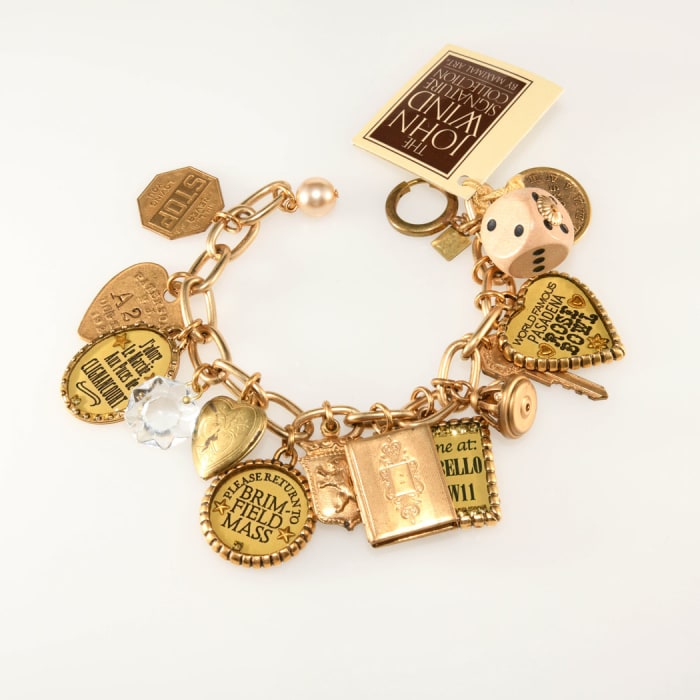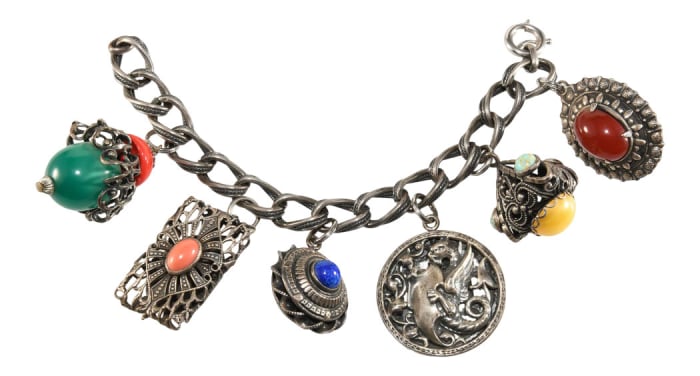Thinking about favorite types of jewelry, I was just telling a friend recently how much I enjoy my collection of bracelets. When I can admire a piece of jewelry I particularly love while wearing it, that’s the icing on the cake for me. If I had to narrow it down further, with no disrespect to my beloved bangles, of course, I’ll admit that charm bracelets are at the top of my list.
I treasure them all, from a karat gold travel charm bracelet started more than 30 years ago to a newer one filled with Tiffany & Co. sterling charms my husband has gifted me over more than a decade. This includes costume jewelry versions from many different manufacturers that are both interesting to collect and super fun to wear. Join me as I take a closer look at a jewelry item that has charmed wearers and collectors for a lot longer than you may realize.
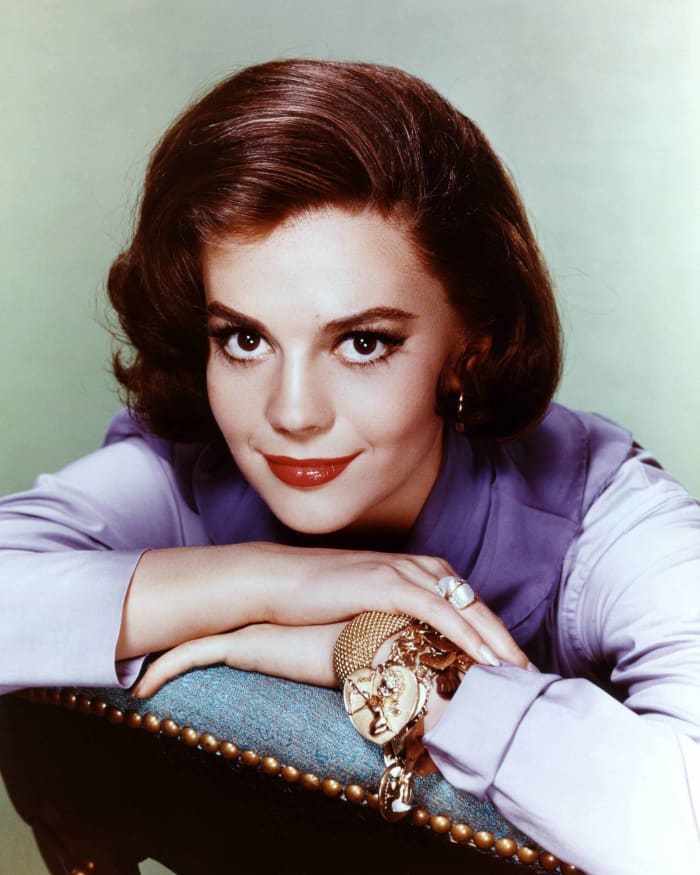
Actress Natalie Wood, star of “West Side Story,” “Rebel Without a Cause,” and “Splendor in the Grass,” among others, proves just how lovely a charm bracelet can be on the right wrist in a 1965 studio portrait.
Photo by Silver Screen Collection/ Getty Images
History: Old to New
Even before charms were worn on bracelets, they were being donned around the neck. This goes as far back in history as the Neolithic period. They served as talismans to ward off evil and to bring good luck. They were, literally, good luck “charms.” The practice has continued for millennia and the superstitious among us still have various jewelry items that serve this purpose.
Charm bracelets as we know them today, with one or more dangling elements suspended from a chain, actually took root in the Victorian era. Watch chains with dangling fobs in many different shapes serve as one example. Chatelaines worn at a woman’s hip suspending a variety of household implements from chains are another. Then, of course, you have Queen Victoria’s actual charm bracelets.
As with so many other jewelry trends during the 1800s, credit goes to Queen Victoria for growing the popularity of the charm bracelet. According to author Joanne Schwartz in her book Charms and Charm Bracelets: The Complete Guide, the Queen owned and wore several charm bracelets including one comprised of her children’s baby teeth. She was actually painted wearing a far less cringeworthy example holding painted miniature portraits of her family members during the late 1800s.
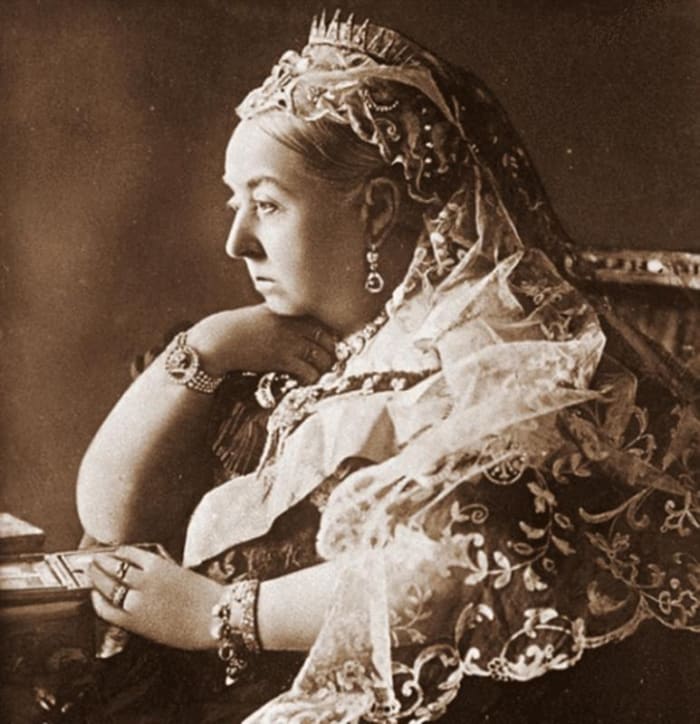
Queen Victoria is credited with growing the popularity of charm bracelets.
Images courtesy Getty Images
Most early charm bracelets, however, were bangle varieties. These rigid bracelets held dangling charms made from silver coins, some of which were smoothed and then engraved with the initials of loved ones. These are described as “love tokens” today. Then Victorian padlock hearts complete with tiny keys became popular and many of those functioned as closures for chain bracelets. Additional hearts, including those embellished with enameling, stones or embossing, could be added. These are quite collectible today.
Moving into the early 1900s, the type of bracelet most collectors associate with charm styles began to take shape. Fine jewelers like Cartier marketed Art Deco examples filled with dangling charms made of precious metals and gemstones in the 1920s. Bakelite versions, which were largely novelty pieces with fruit or another figural charms, were popular during the 1930s. Many of these had chains made of lightweight plastic suspending the heavier Bakelite charms.
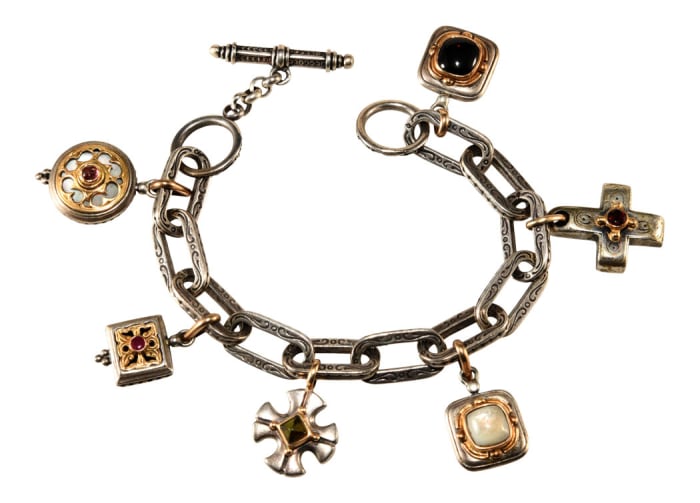
Sterling silver and 18k gold charm bracelet similar to Konstantino designs, c. 2005.
Image courtesy Jay B. Siegel
Sterling silver charms and bracelets also became quite popular in the 1930s and ‘40s. These were assembled with charms chosen by the owner or selections that were gifted to them. Even Hollywood embraced the charm bracelet craze and starlets were frequently described by the press as wearing bracelets filled with charms given to them by their many suitors. This once again fueled the passion for charms among the masses.
By the Mid-Century era, it was quite common to have at least one charm bracelet in a lady’s jewelry box. They were usually made of karat gold or silver, and sometimes included a mix of precious metals and plated base metal charms. The commonality is that each charm exhibited a personal association to the wearer whether it be a profession, hobby, special occasion, admirer, or a place they had traveled. Each charm bracelet of this type quite delightfully tells a story about the person who owned it.
The 1950s and ’60s also saw a proliferation of costume jewelry charm bracelets being made by many different manufacturers. Napier produced some of the best known and collectible. In her book, The Napier Co. (Life by Design Publishing), jewelry historian Melinda L. Lewis notes that while some Napier charm bracelets were made in larger quantities, others were assembled from random charms the company discovered in back stock yielding an array of styles for collectors to seek today. Monet is better known for costume jewelry versions of traditional charm bracelets that allowed the wearer to customize them with charms made of plated base metal. Author Alice Vega covers those in her book, Monet: The Master Jewelers (Schiffer Publishing).
Even in the 2000s, charm bracelets remain in vogue. Sterling silver versions by James Avery, for example, still allow charm fans to put together a unique bracelet based on their own preferences and lifestyle. Others, like the whimsical assortment marketed by John Wind under the Maximal Art brand, offer jewelry lovers a new iteration of charming costume jewelry. Some of the latest pieces by this contemporary company cleverly incorporate crystals from New York’s famed Waldorf Astoria Hotel chandeliers into to fashionable bracelets with initial charms.
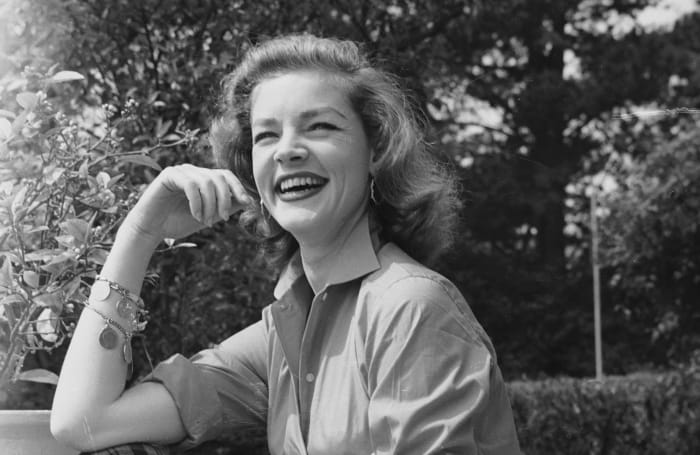
A star of Hollywood’s Golden Age, Lauren Bacall flashes a smile and a charm bracelet at home in 1955.
Photo via John Kobal Foundation/Getty Images
Learning More
If your curiosity about charms and charm bracelets is piqued at this point, I’d recommend picking up a copy of the aforementioned book Charms and Charm Bracelets: The Complete Guide by Joanne Schwartz (Schiffer Publishing). Every perusal of this reference not only provides enlightenment about the sheer number of different types of charms and bracelets out there, it also offers inspiration to learn more about the stories of these captivating collectibles hold.
You May Also Like:
How to Identify Unmarked Costume Jewelry


